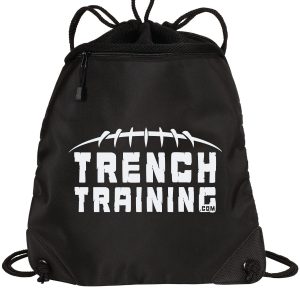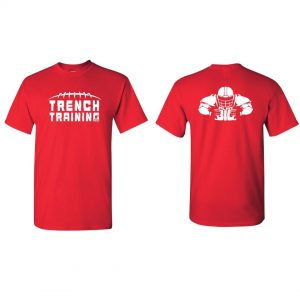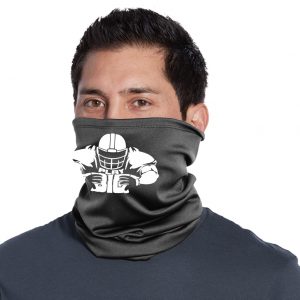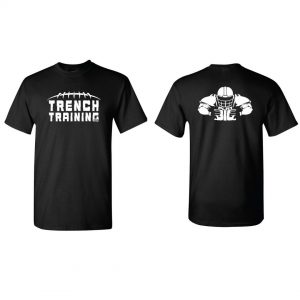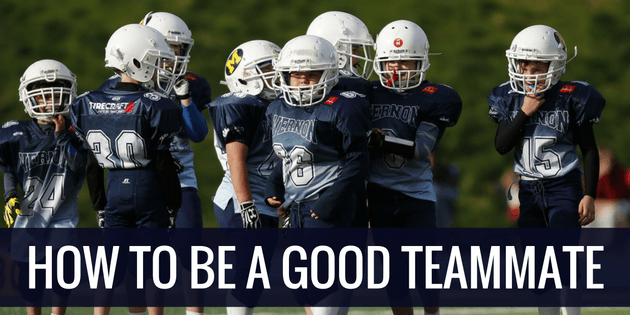
by Steve Stark | Nov 29, 2016 | player development, teamwork
One of the great things about football is that it teaches you how to be a good teammate.
This is a lesson that serves us our entire lives.
We’ve all heard about the chemistry of great teams.
It’s not something you can see or measure but it’s there.
It’s always there in great teams.
First and foremost this chemistry requires good teammates.
It’s impossible to have a great team without them.
Let’s look at some of the traits of how to be a good teammate.
Good Teammate Traits
Honesty
Being part of a team requires good relationships.
Part of any good relationship is the ability to be honest with one another.
Sometimes that means calling guys out when they are not doing the right thing.
This is tough but you can’t have a great team without honesty.
It also requires you to be honest with yourself.
Can you call yourself out when the time comes?
Trustworthy
Building trust takes time.
Honesty is a big part of being able to trust someone.
Teammates also need to know that can trust that you are going to do the right thing.
Both on and off the field.
As a football player, each teammate must trust the man next to them.
Your teammates have to trest you to do your job.
Respectful
Great teams are built on respect.
You have to have respect for your coaches, your teammates, the officials and the fans.
A lack of repsect is a cancer on a team.
Without respect you can’t gain trust and that makes it very difficult to have success on the field.
Supportive
Every team faces adversity.
In many cases, that adversity comes directly to individual players.
A running back fumbles.
A defensive back blows a coverage.
A wide receiver drops a touchdown pass.
A kicker misses a game tying field goal.
Whatever the adversity is, your teammate will need to be lifted up.
You have to have their back.
Selflessness
Can you give without getting back?
Can you sacrifice for your teammates?
As a lineman, you have to e a selfless player.
You aren’t going to get all the accolades that a QB, Running Back, WR, Linebacker or DB might get.
The question you should continue asking yourself is, “What can I do for my team?”
Never, “What can my team do for me?”
Accountability
Are you able to let others hold you accountable?
It can’t just be words.
Actions are what make things happen.
Your coaches and teammate need to hold you accountable for your actions or lack of actions.
Dependable
Will you do what you say you’re going to do?
Can your teammates depend on you to do your job every time?
Being dependable will serve you your entire life.
Whether it’s being dependable for your team, your job, or your family, it speaks to your character.
So what kind of teammate are you?
Which of these traits do you need work on?
Keep these traits of how to be a good teammate in mind for your next season.
If you you found value with today’s post please like, comment and share.
Play Big!

Coach Steve

by Steve Stark | Nov 22, 2016 | Recruiting, student athletes
Athletes and social media can make for a very dangerous combination.
Not everything we think or feel should be broadcast to the world.
According to the Pew Research Center, 94% of teens are online daily.
Of that number, over 71% say they use multiple social media platforms.
These numbers will only increase as our technology advances.
When you are an athlete at the high school, collegiate or professional level, you are under more scrutiny than the average student.
Good or bad, it’s a something all athletes need to remember.
Administrators at every level are trying to be more proactive about athletes and social media use.
Many schools today offer courses or seminars for their athletes to learn how to handle social media.
Here are a few things to consider regarding athletes and social media.
3 Tips for Athletes and Social Media
1. Nothing is private.
Every single thing you post or tweet is public.
It doesn’t matter if you delete it.
Once it’s out there, there’s no getting it back.
Even if you think you are sending a private message you must consider it public.
For instance, let’s say you send a direct message to a friend ripping your high school football coach.
You and that friend have an argument.
The friend then gets upset and shares your direct message to his Twitter followers (including the coach).
If you type it, then you have to own it.
2. If you share it or retweet it, it’s yours.
What about other people’s content?
If you share a disrespectful image or message from someone else, it will be viewed as if you created the image or made the statement yourself.
You own everything that is displayed on your social media accounts.
3. Every piece of content is a direct reflection of you.
Personal branding becomes a big deal for professional athletes.
However, high school and college athletes must be thinking about their personal brand as well.
Coaches everywhere are now monitoring social media.
Most programs have people that spend all their time monitoring and reviewing potential recruits’ social media accounts.
They are tired of social media getting athletes in trouble.
Recruiters will avoid players based on their social media.
Caoches from Penn State, Duke and SMU have actually tweeted about how they “dropped” recruits because of their social media presence.
What you do on social media speaks to your character and your judgement.
Don’t let social media keep you from being recruited. Be smart.
If you wouldn’t show your account to your parents or grandparents, what do you think coaches will think?
How To Post and Share Safely
1. Be positive.
If you are going to post something, keep it positive.
No one, especially a coach, wants a negagtive player on their team.
Your tone on social media will come across clearly.
Keep the negativity to yourself and post the positive.
2. Be supportive.
How can you help others?
Lift someone up. Make someone else’s day better.
Be there for your classmates, friends and teammates.
3. Share news around your sport, school or your teammates.
What’s happening in your sport?
What information can you share that others might find interesting?
People on social media want to be informed.
4. Engage with people you admire.
Today you can interact with nearly anyone through social media.
Who are the athletes and leaders that you look up to?
Follow them and get in on their discussions.
Just be respectuful and contribute to the discussion.
5. Stay out of arguments.
Whether or not they want it, athletes are public figures.
That also means they can be targets.
Athletes have fans but they often have just as many people who want to see them fail.
Don’t get caught up in the negative stuff.
It’s easy to get baited but you need to ignore the negativity.
Never engage in an argument on social media.
It’s always best to walk away.
If you you found value with today’s post please like, comment and share.
Play Big!

Coach Steve
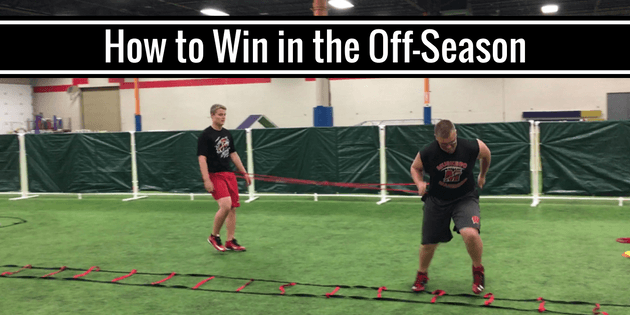
by Steve Stark | Nov 15, 2016 | player development, training
We often get the question, “What should my kid be doing during the off-season?”
A football season takes a great deal from a player both physically and emotionally.
Fo young players and old, it’s important to decompress a little.
Taking a couple weeks off is actually great for your body.
All the bumps and bruises get healed up and we get back to normal physically.
The emotional drain on a player also demands some recovery time.
As a 3-sport athlete in high school I was always pretty worthless the first week of basketball.
Only time and rest can give you the recovery you need.
So what do we do once our healing is done?
Here are some tips to have the best off-season possible.
4 Ways to Have a Great Off-Season
Play other sports.
Take advantage of every chance you get to compete in athletics.
The experience of competing against other drives your development as an athlete.
There are things you learn in competition that cannot be learned any other way.
Sportsmanship, effort, game intelligence, and the ability to deal with adversity are just a few.
There’s also a huge benefit physically to playing other sports.
As a football player, basketball had a significant impact on improving my footwork and overall athleticism.
Every sport requires a different set of athletic skills and ability.
When you take advantage of this physical development it will significantly improve your athleticism.
Check out our previous article on the Advantages of Being a Multi-Sport Athlete.
Drill the skills.
Every position on the football field has a set of skills that need to worked.
This is the biggest deficiency that we see in the development of linemen.
Just because we don’t throw, catch or kick the football does not mean we cannot develop skills for our position.
Stance, take-off, punch, footwork, pass sets and pass rush moves are all skills that should be repped in the off-season.
Improve your craft. Drill the skills!
Stay focused on school.
As a high school coach for many years, I saw many kids fall off in school when the football season ended.
What many of them didn’t realize was that there spring grades effected their eligibility for the following season.
The majority of high schools across the country begin their season prior to the start of school.
In Wisconsin, our teams play two games before the start of the school year.
Very few athletes go on to play college sports.
According to NCAA.org statistics from the 2014-2015 season, 2.6% of high school football players moved on to play in NCAA Division I programs.
Of those players in NCAA Division I football only 1.6% went on to the NFL.
While we love to encourage kids to dream big, it should never be at the expense of their education.
Stay focused on school and be a great student and citizen.
Create a plan.
Give some thought to what you want to accomplish during your off-season.
Think about who you wan to be when you start training camp next fall.
Envision it.
What do you weigh?
How strong are you?
How fast are you?
What does your footwork, punch, stance, and take-off look like?
Really give it some thought and then write it down.
I know… you think that sounds weird and crazy, right?
WRONG!
You have the power to become the best version of yourself.
If you can conceive it, you can achieve.
Writing it down makes it real.
It holds you accountable to yourself.
Give it a try and let us know how that works for you.
Remember, it’s okay to dream big.
In fact… it’s a must if you want to PLAY BIG!
If you you found value with today’s post please like, comment and share.
Play Big!

Coach Steve
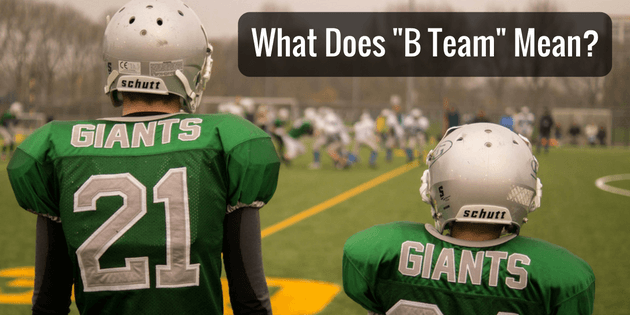
by Steve Stark | Nov 8, 2016 | coaching kids, player development
What does “B Team” mean in youth sports?
It can actually mean different things in different youth sports programs.
When we talk about A and B teams, most youth sports programs attempt to divide teams by talent levels.
Programs will evaluate the players they have and rank them based on talent level.
For instance, let’s say you have 50 kids trying out for a 6th grade youth football.
The program would evaluate and rank those kids 1 to 50.
While the program has to take into account numbers at each position this gives them a guideline to break up the teams.
Some programs split their players up equally based on talent level.
So which model is better?
That is a very difficult questions.
A/B Team Model vs. Equal Split Model
Kids develop at such different rates.
It’s impossible to say how good a player is going to when they are just in 5th or 6th grade.
We may get an idea but no one really knows.
The focus at this level should be to keep kids in the game.
So there are couple ways to look at how we deal with multiple teams in a single grade level.
Lets look at the advantages and disadvantages of the A/B team model.
A/B Team Model
Advantages:
Kids practice with athletes with a similar level of skill.
Competition in games is more closely matched.
More playing time.
Disadvantages:
Kids are not challenged by better athletes.
Coaching may not be as good.
Kids may lose interest if they feel they won’t play in the future.
Kids can be mean and feelings can get hurt.
Being a Parent of a B Team Player
More times than not it’s the parents that have more trouble dealing with their player being on the B team than the actual player.
Kids at the youth levels want to have fun.
How many times has your child been more worried about where they are going to get ice cream after the game that the game itself?
Our kids don’t often care if they are on a B team as long as they are having fun.
As a parent fun should be our first priority for our players.
After that we should be looking for them to continue to learn the game.
Your child will take their cues from you.
A couple years ago my daughter did not make the A team for basketball.
I have to say that I was disappointed.
My daughter didn’t let it phase her a bit.
She was happy because a couple of here closest friends were on that team.
So I trusted that those who evaluated her knew that she belonged on the B team.
And she was happy.
Looking back on that, it was the best decision for her.
She played that year at a high level on the B team.
Gained a ton of confidence, developed her skills and made the A team the following year.
The point with this story is that kids develop in different ways and at different times in their lives.
If I would have blown up and showed my disappointment who knows how she would have reacted.
Instead, my wife and I supported her and told her to have fun playing.
At the youth level, the most important thing is to keep kids playing.
Keep kids wanting to play.
Keep kids having fun playing.
As parents, we need to keep our egos in check.
Make sure that what’s happening is right for your child and not what’s right for you.
If you you found value with today’s post please like, comment and share.
Play Big!

Coach Steve
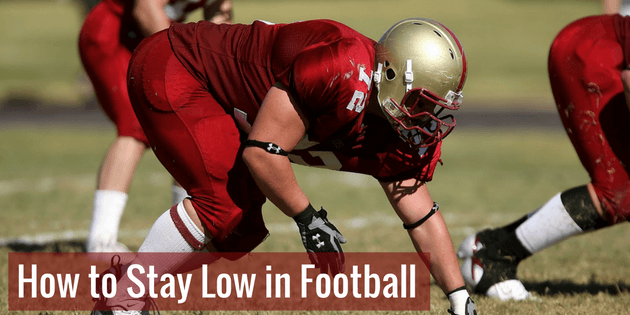
by Steve Stark | Nov 1, 2016 | player development, training
Learning how to stay low in football is the key to success in the line.
“LOW MAN WINS!”
Every football player has heard a coach say this.
So why is that low man wins in football?
It’s all about leverage.
Players who can stay low will play with leverage.
Leverage allows players to take advantage of their lower body strength.
We often talk about teaching kids to be knee benders and not waist benders.
Waist benders have no power and therefore no leverage.
This is why we see smaller players sometimes dominate larger opponents because they play low and maintain leverage.
Let’s look at some things we can teach how to stay low in football.
How to Stay Low in Football
Start with a good stance.
Whether on offense or defense, we look for good bend in the knees and a stable, balanced stance.
Offensive linemen need to get there but down and play with a flat back.
We also want as much of their feet in the ground as possible and a minimal amount of weight on their down hand.
This allows the offensive lineman to release in any direction.
For defensive linemen, we look for more weight on their hand and their butt up a little.
This is a bit more of track stance to get off the ball and disrupt.
Of course, different offenses and defenses may want different approaches but this is a general rule.
Either way pad level coming off the ball has to be a huge factor in stance setup.
Build core strength.
Athleticism is based in the core.
Our definition of the core includes the hips up to just below the chest wrapping around the entire the body.
It’s not just abs!
The core includes not only the abdomen but the hips, obliques and lower back.
It also includes all the small stabilizing muscles around the spine.
Everyting in the core is not only essential for athletic ability but also injury prevention.
In order to play with low pad level the core needs to be very strong and stable.
Continually work on hip flexibility.
We discussed this recently but it cannot be emphasized enough.
While we consider hips to be a part of the core it requires extra attention.
Without the proper hip hinge and flexibility we cannot play low.
The hips are what allow us to bend properly at the knee while keeping a flat stable back.
This helps us to use our powerbase for leverage with form that keeps us healthy.
Repetition, Repetition, Repetition.
The way to play low is to train low and practice low.
Repetition is the only way we condition our bodies to play with good pad level.
How we train and maintain our flexibility every day of the off-season will have an effect on our pad level during the season.
Spending the time on stance, core strength and hip flexibility will determine our ability to play low.
If you you found value with today’s post please like, comment and share.
Play Big!

Coach Steve










